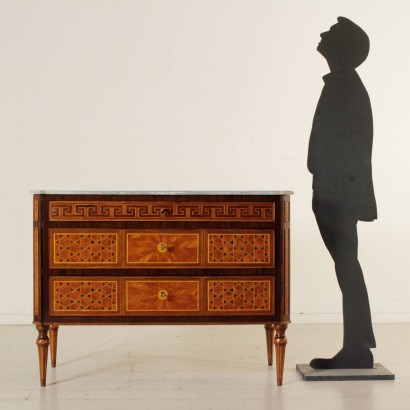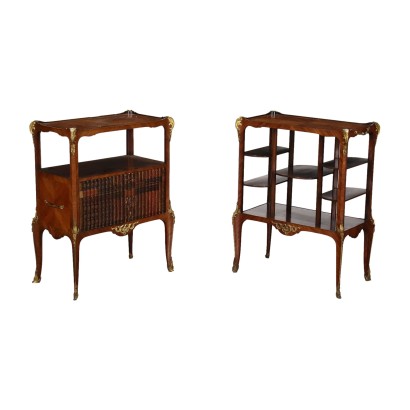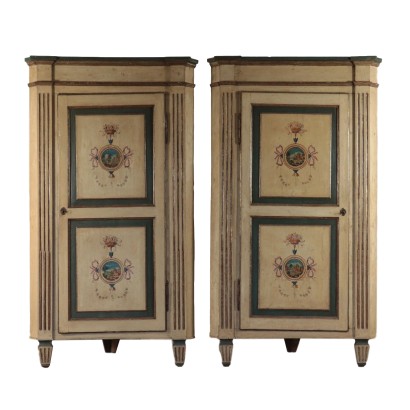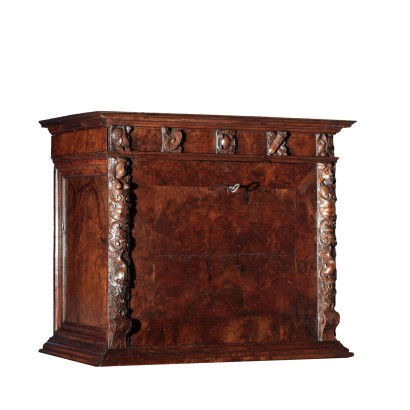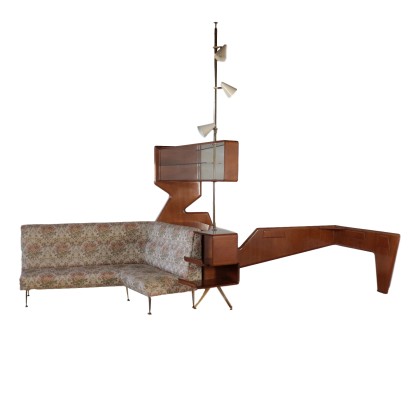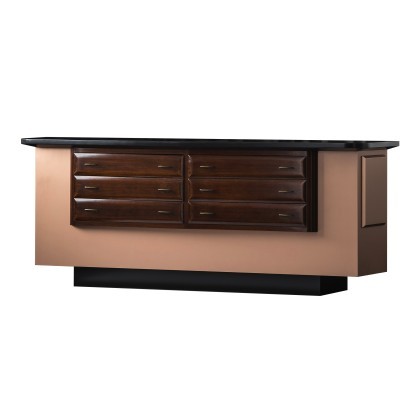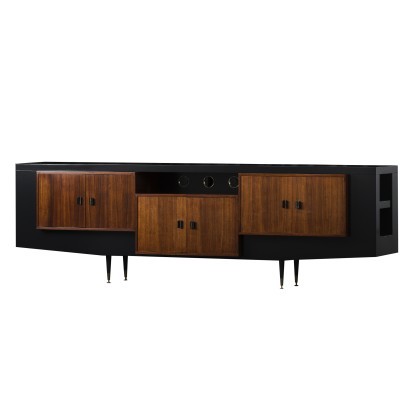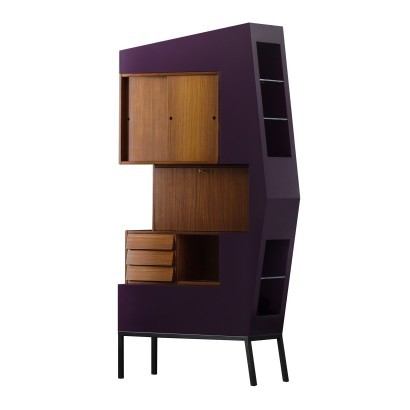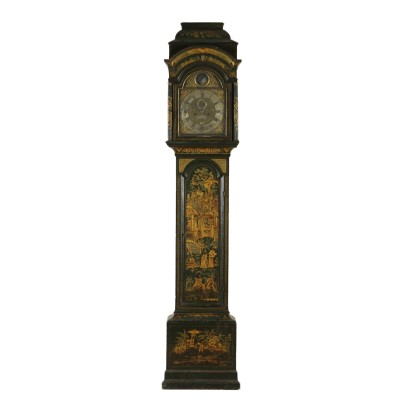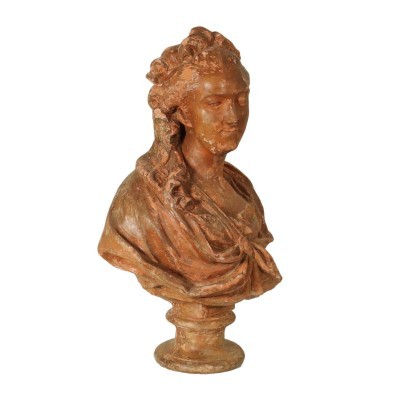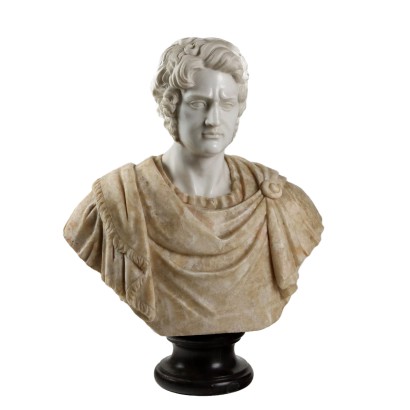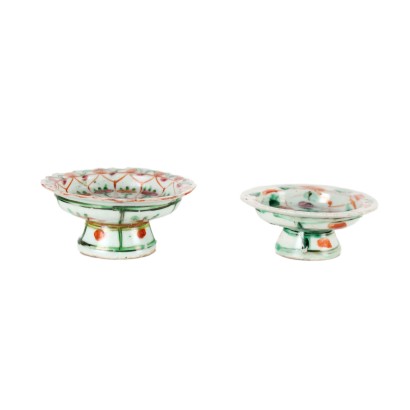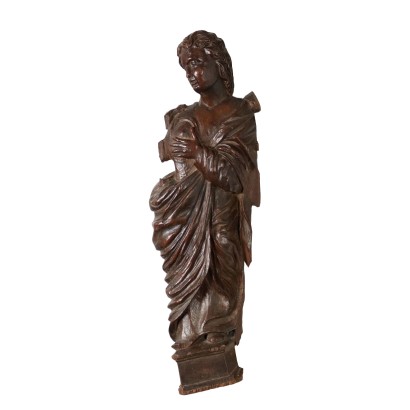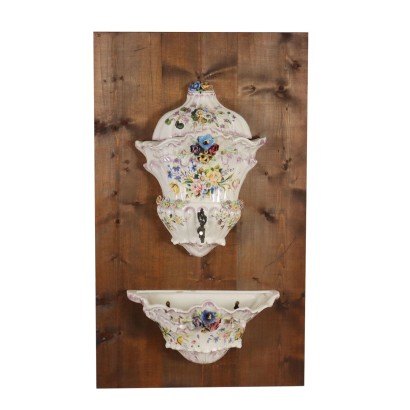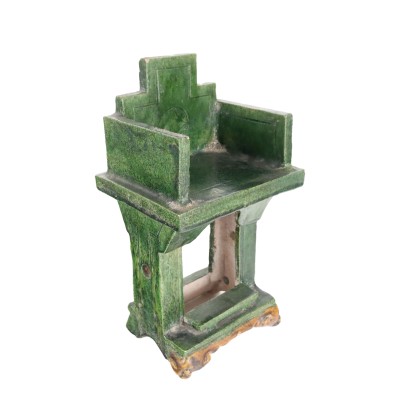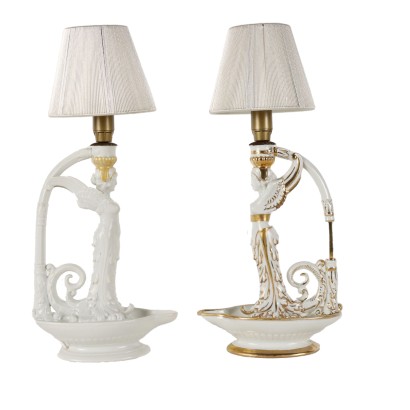Chest of Drawers Bois de Rose Piedmont Italy Last Quarter of 1700s - Chest of drawers torinese sec. XVIII
Features
Chest of drawers torinese sec. XVIII
Style: Neo-Classical (1765-1790)
Age: 18th Century / 1701 - 1800
Origin: Torino, Piemonte, Italy
Main essence: Brazilian Rosewood
Material: Bardiglio Marble , Solid Walnut
Description
A Neoclassical chest of drawers. The first drawer under the top follows the motif of the bands, characterized by reserves with Greek frets. The other two drawers have two marquetry reserves like those on the sides and a reserve in the middle, radial veneer. Four protruding columns, the pair on the front have a 45-degree angle and bois de rose reserves enclosed in small frames, the same in which drawers are enclosed. Rosewood, bois de rose, walnut and maple. Inlaid feet. The drawers' interiors have been made by a cabinetmaker using walnut boards and they are characterized by dovetail joints ad a 45-degree angle on the bottom. Bardiglio marble top. Manufactured in Turin, Italy, last quarter of the 18th century.
Product Condition:
Restored.
Dimensions (cm):
Height: 91
Width: 122
Depth: 56
Certificate issued by: Enrico Sala
Additional Information
Notes historical bibliographic
As for cabinet making, Turin in the eighteenth century is strongly influenced by the figure of Pietro Piffetti (1701-1777, considered together with Charles Buolle to be the greatest cabinetmaker of all time). In his latest creations he will be able to almost definitively abandon the lines of "Juvarrian memory" that characterized him and also the rich materials such as mother of pearl, ivory, tortoiseshell and various metals, he will create, as a prototype for his heirs, simpler furniture and to the "new fashion" beyond the Alps. The French influence will in fact always be very present in the Savoy capital. If, as regards the intaglio works, Turin will benefit from another exceptional craftsman, Bonzanico, for the cabinet-making of the last decades of the eighteenth century. Piffetti's legacy will be taken over by several cabinetmakers, capable of great executive mastery but without the inventive quality of the master. Among these we remember Giovanni Galletti (1735-1819) and Giuseppe Viglione (1748-1823). Our chest of drawers is certainly more approachable to the known works of the second. If the construction quality denounces the very important client, the marquetterie cabinet-making motifs and the use of Greek frets are characteristic features of the well-known furniture of the Viglione. A piece of furniture, which I was lucky enough to analyze from life, and which has many similarities, due to the very accurate execution, the same precious materials and the same marble, is the half-moon chest of drawers, preserved in Turin on the second noble floor of Royal Palace; also the turned and inlaid feet seem to join the two pieces of furniture to the same authorship. The presence of the Bardiglio di Valdieri marble top is also particularly interesting. The quarries of "Bardiglio di Valdieri" were royal property, in fact crosses of Savoy and Royal Crowns were still found on the boulders, which established the property since 13 August 1743. We can therefore confidently affirm that the chest of drawers analyzed here was made in the last quarter of the eighteenth century. in Turin city, if not for the royal family for an aristocracy close to it, while having no signatures it is not possible to give the production to the Viglione workshop with certainty, even if it certainly seems to us the most probable among the known workshops.Style: Neo-Classical (1765-1790)
This historical period includes a first phase that can be properly defined as the Louis XVI style.nOnly at a later time, with the maturation of archaeological fashions, was a new vision of furnishing civilization formulated and codified, now fully attributable to the Neoclassical Style.
In fact, both trends coexisted in unison until the last years of the eighteenth century.
nIn the field of cabinet making, the Directoire, Retour d'Egypte, Consular and Empire styles also fall within the neoclassical era.
nFind out more about Neoclassicism with the insights from our blog...
n




